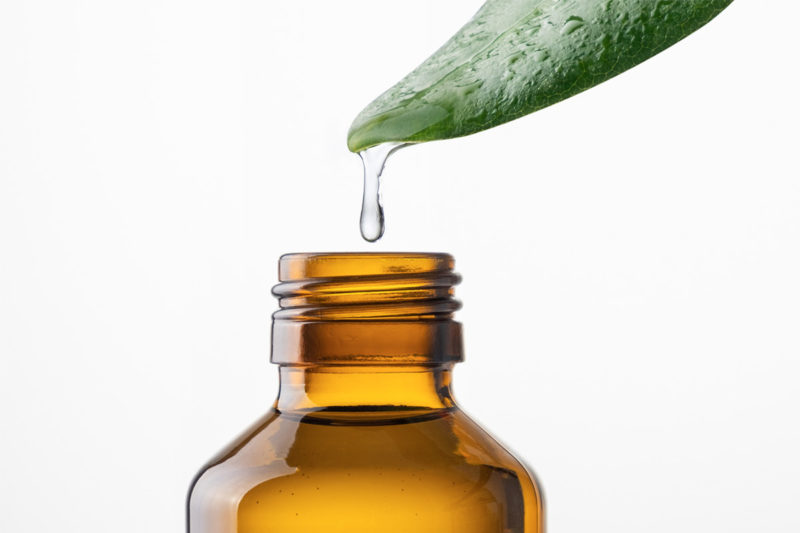The idea stemming from Rousseau that holds nature up as a paragon of virtue and demonises all things chemical is a widespread conclusion that has been reached all too hastily in recent years, not least when it comes to beauty products. So is it borne out in real terms?
Over the years we have seen natural ingredients turned into USPs. “With shea butter / aloe vera / green tea” and so on are now emblazoned in large print on a great many products, along with claims of ever greater percentages of natural-origin ingredients. Naturalness has won out, and we are nothing but happy about that. But take care not to be taken in by certain greenwashing claims. Moreover, is naturalness bound to vouch for higher quality and greater effectiveness on the skin? As is often the case, you have to look closely and be aware of nuances.
More naturalness – undeniable progress
These days we have moved on from the beauty products of the 1980s-90s which were big on chemicals, and full of active ingredients of unknown composition with unpronounceable names.
The turning point of the 2000s
Let’s bear in mind that EU regulation was among the most stringent, and the beauty products sector heavily monitored, due to the 1972 Morhange talc tragedy. A handling error led to an excessive amount of potent bactericide being put into Morhange baby powder, leaving 36 newborns dead and 168 more poisoned. This tragedy left deep scars, and gave rise to the French Act of 1975 and the EU Directive of 1978 on beauty product rules and regulations. But even so, the 1970s were about technical prowess, whereby chemicals were equated with performance and naturalness was about being “baba cool” in a waft of patchouli. The 2000s marked a turning point. Firstly in 2002 with the creation of the Cosmébio charter governing organic beauty products, which then shed their “lentil-weaving” image. Secondly, in March 2005, an exposé by French investigative TV journalism series Envoyé Spécial put the cat among the pigeons when it came to “standard” beauty products and their parabens let loose on the general public. Suspicion was planted in consumers’ minds. At that point all things natural were suddenly “good”, and all things chemical “bad”.
Beauty products “go green”
Little by little natural ingredients gained ground, beyond organic beauty products, which played an important role as both guiding force and troublemaker. All the producers looked to “go green” with their formulations and sought out natural ingredients, in some cases local and in others exotic. Aloe vera, argan and shea butter, to mention only the most common, are now well-known and recognised by the general public and have become USPs. And little by little, whilst including their most popular natural ingredients, laboratories sought to drop certain less desirable chemical ingredients from their formulations. Little by little it emerged that these might disrupt the microbiota, if not prove irritant or be suspected of being endocrine disruptors. It was a slow, drawn-out, difficult process, because it entailed overhauling each formulation and learning new ways of designing formulations.
Natural is not to be confused with of natural origin
Natural or of natural origin?

Since 2017, up against organic beauty products that had gained a foothold with very clear standards, the beauty products industry has been wanting to set out definitions of organic or natural ingredients… The 16128 standard ensued, under which “Natural ingredients are beauty products ingredients yielded only from plants, animals, microorganisms or minerals”. Pure plant oils and butters, essential oils and solvent-free unrefined plant extracts meet this definition. Whereas “Ingredients derived from natural materials are beauty product ingredients, more than 50% of which are of natural origin, which are yielded via set chemical and/or biological processes designed to chemically modify them”. And this is where the problem lies, because in consumers’ minds, natural and of natural origin get mixed up and, let’s be honest, producers do nothing to clear up the confusion. Hence we have since seen product labels popping up all over stating 95% or 99% “natural origin”… Whereby “natural” is in large print but “origin” all but disappears. Yet there’s nothing to say that the processing is of the green chemistry variety. Hence a raw material can be deemed of natural origin whereas it consists of up to 49% non-renewable resources.
The natural claim in a formulation that’s anything but
Similarly, some formulations, just because they put a natural active ingredient at the forefront, may contain all sorts of ingredients in the rest of the formulation such as sulphates, silicones, preservatives, surfactants, etc. Whether on shower gels, haircare or skincare products, you’ll see the claim all over. Let alone the vegan claim in make-up, which allows a highly chemical product to do some greenwashing with the excuse that it bears the PETA logo.
Does natural mean less toxic?
Now that we’ve seen that you mustn’t be taken in by marketing claims, which you might say are “overstated”, what’s what when it comes to the skin?
Less toxic?
Obviously, natural ingredients can be opposed to products of synthetic origin, especially those that have come under fire. Among these, some are problematic because they are not eco-friendly, but on the face of it have no impact on human health: silicones, mineral oils, etc. Others can cause irritation, like surfactants with sulphates. Lastly there are those suspected of being endocrine disruptors or carcinogens, like triclosan, phthalates, oxybenzone and benzophenone and volatile silicones – octamethylcyclotetrasiloxane (D4) and decamethylcyclotetrasiloxane (D5). But there are also endocrine disruptors in natural ingredients. Soya is oestrogen-like, as lavender and tea tree essential oils are suspected of being.
The worst poisons exist in nature
After all, everything is about chemistry. Plants are complex, and are the result of millions of years of chemical changes. And there are extremely toxic plants in nature, not only poisons like cyanide or hemlock. These poisons, in infinitesimal amounts, are even used as medicines. It is always a question of quantity, in both the natural and synthetic form.
Conversely, to push the argument to the extreme, you could say that petroleum is natural.
Some natural ingredients don’t suit all skin types
Natural beauty products are not harmless, either. Natural ingredients can be poorly tolerated. It’s the case, not least, of essential oils. They are extremely potent and classed as potentially allergenic, not least those of citrus fruit. Thus there is virtually no essential oil that is free of allergens, and some are particularly irritant or sensitising. Cinnamon essential oil can even be toxic.
That’s why those with sensitive skin must avoid them, or always try them out before embarking on long-term use. A reassuring fact: beauty product brands use them in the right amounts, and the average percentage of essential oils used in an organic facial skincare product, here in France at least, is low.
Natural – more active
One of the claims often taken on board is that natural and organic products are less effective. Let’s say that they act in a different way, and call for a little patience.
A greater affinity

Natural active ingredients show a greater affinity with the skin’s natural constituents. It’s the case, not least, of oils and butters. Their lipids, which are structurally very similar to those of the skin, sink into it and are assimilated quickly. They melt right into our own lipids in the hydrolipid stratum. That applies to the skin and also the hair.
It has emerged that, not least, synthetic surfactants can upset the balance of the skin microbiota. As a result, more and more standard brands are dropping sulphates, and switching out synthetic surfactants in favour of those derived from coconut for gentler, more biomimetic action. Generally speaking, natural ingredients are more respectful of the skin, its microbiota and its hydrolipidic film.
More active
Some chemical ingredients are inert or neutral, meaning that they are not of any real benefit to the skin or hair. This is the case of mineral oils, petroleum jelly, paraffin, etc. These do form a barrier preventing water from evaporating off of the skin, but do not remedy it. Silicones do the same to the hair. They also impart slip and softness to skincare products and make-up, but without any skincare benefits. So the base that is a standard emulsion combining filtered/distilled water and synthetic oil is just a vector that brings nothing active with it.
Complex,100% active ingredients
Synthetic active ingredients are often monolithic. Made up of isolated molecules, they often have a sole targeted action. Plants are the result of millions of years of evolution. Hence their extracts contain hundreds of active molecules. They contain vitamins (A, B, C, D, E, K and PP), antioxidants (polyphenols, flavonoids, anthocyanins, resveratrol), trace elements, amino acids and fatty acids (omegas 3, 6 and 9). Thus they affect all of the skin’s vital functions: hydration, protection, regeneration, etc.
Similarly, oils and butters are high in vitamins and fatty acids and impart suppleness, nutrients and invigoration.
So ultimately, a truly natural formulation, without overly adulterated ingredients – and all the more if organic – is virtually 100% active.
Genuine effectiveness
For a while, it was more difficult to observe genuine effectiveness in natural beauty products, in particular organic ones, not least in the anti-ageing segment. When it comes to hydration and nutrient delivery, conversely, natural products often work faster due to their high concentration in active ingredients that have an affinity with the skin. In fact, witnessing the effectiveness called for more patience. Because, since these natural or organic beauty product ingredients are less targeted and have a more complex, broad-based action, they appear to be less effective. But progress in green chemistry and biotechnology now allows these products to be as appealing to the senses and effective as standard products. These, meanwhile, are increasingly dropping synthetic ingredients and moving towards more natural formulations.
Natural products are indeed better for the skin, because they have more of an affinity, are biomimetic and more active. As long as you know how to read the labels and can tell the genuinely natural products apart from those that masquerade as such. But mind you don’t fall into the Manichean mindset of thinking that anything natural is bound to be better. If you have sensitive or reactive skin or are prone to allergies, watch out for some ingredients which, although natural, can be unsuitable or even irritant or allergenic.







